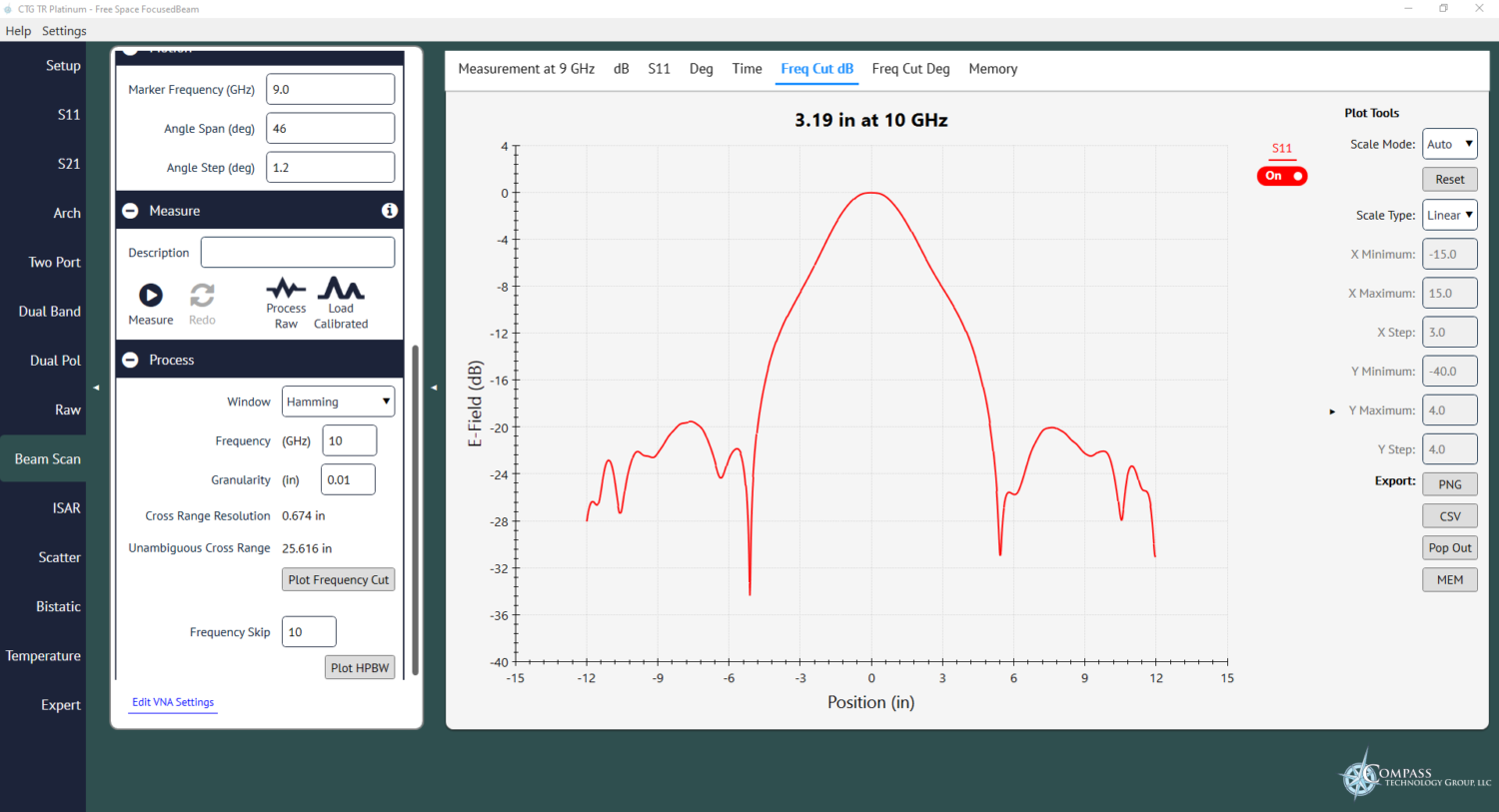
CTGcalc™ Software: A Measurement Calculator for a Complete Material Measurement Solution
CTGcalc™ is a Compass Technology Group designed suite of microwave measurement software applications. These applications acquire data, calibrate that data, and then process it to provide the parameter of interest, such as dielectric permittivity, magnetic permeability, or sheet impedance.
CTGcalc™ is a measurement calculator that has a modern, user-friendly interface, designed to be intuitive and to guide the user through measurement, calibration, and analyses so that they end up with results that can be trusted. The software provides mature plotting capabilities for fine-tuning data presentation. CTGcalc™ also auto-increments file names for all measurements to minimize risk of overwriting important data.
CTGcalc™ TR is the flagship application and works with waveguide, coaxial airline, and free space instrumentation. In some cases, customers may choose to purchase licenses to the CTGcalc™ software to utilize with their legacy measurement equipment. Many of the Compass Technology Group devices utilize CEM inversion, and the data from these systems require specific CEM databases. In these cases, an instrument specific CTGcalc™ application is included as part of the measurement hardware.
Compass Technology Group’s various material measurement calculator instruments use vector network analyzers (VNAs) to drive the equipment. CTGcalc™ works with most modern VNAs manufactured by Keysight, Anritsu, Copper Mountain Technologies, and Rhode & Schwartz. CTGcalc™ also uses the industry standard “Touchstone” file format, so that it can read and write files compatible with commercial VNAs.
CTGcalc™ TR Software Features
CTGcalc™ TR is used with conventional material measurement fixtures and the TR stands for transmit and reflect. This application also includes expert-level inversions (e.g. multilayer extraction) as well as optional tabs for specimen rotation, radar cross-section, and furnace/oven control.
- CTGCalc™ communicates with most modern VNA’s to measure two (or four) port S-parameters within a waveguide, coax, or Free Space Measurement Systems.
- Note for Waveguide/Coax Users: CTGcalc™ enables the use of TRL or other calibrations performed and saved on VNA.
- Uses state-of-the-art algorithms to invert the measured S11, S12, S21, and S22 data into complex permittivity, permeability, and sheet impedance.
- Two-port method uses “Four-parameter” inversion to eliminate phase errors and “fudge factor” corrections.
- Data is organized and saved as .S1P or .S2P files with headers listing all measurement variables.
- Inverted data sets are saved as .imped and .epsMu for impedance and permittivity/permeability respectively.
- Advanced plotting of data is also included
- Transmission (insertion loss) and/or reflection (reflection loss) versus frequency.
- Material property inversions (complex permittivity, permeability, and/or sheet impedance).
- CTGCalc™ Expert package includes advanced algorithms for advanced users.
- Adds five additional computation algorithms located on a separate “expert” tab:
- Two Sample (Metal Backed Inversion) – Calculate complex permittivity and permeability of conductor-backed specimen from S11 data of two samples of the same material at different thicknesses.
- Debye (Metal Backed Inversion) – Use a genetic algorithm and Debye models to determine the complex permittivity and permeability of a metal backed sample using S11 data.
- S21 Dielectric (multilayer inversion) – Compute the complex permittivity of an unknown dielectric layer in a multilayer stack of materials using a S21 measurement and EpsMu files that characterize the known layers.
- S21 Impedance (multilayer inversion) – Compute the sheet impedance of an unknown layer in a known stack of materials using an S21 measurement and EpsMu which characterize the known layers.
- Two Port EpsMu (Multilayer inversion) – Compute the complex permittivity and permeability of an unknown layer in a known stack of materials using a full two port measurement (S11, S12, S21, and S22) and epsMu files which characterize the known layers.

